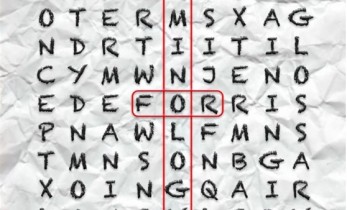Greater than 4 minutes, my friend!
Mini Refresher Course on Terminology Standards (or, Did you know that…? Quick review on terminology standards
Terms are standardized to avoid ambiguity so that experts from the scientific and technological world can effectively communicate with each other and sell or exchange their products or services. Below are some facts to test your knowledge:
- Technical standards go hand in hand with terminology standards: When a technical standard is created (for example, a USB drive or a translation quality standard) it usually goes accompanied by a terminology standard (an agreement on which technical terms will be used in a technical standard).
- Individual countries, state-owned entities, semi-private and private organizations send their national/industry delegations that approve the documents containing the standards. They select and agree on the terminology to be used in the technical standard to promote preferred usage and avoid the use of deprecated (forbidden) terms.
- Delegations go back to their countries, but the standards are not binding until a government (organization or company) decides to make it official. However, if a translation company says that they are applying an ISO standard and in practice they fail to do it, then it is binding because it is included in the contract signed with the client. Likewise, at the governmental level, if it becomes part of the law, then it is binding.
- Standards are approved using a bottoms-up approach, that is, national experts or private companies propose the terminology which can go international or remain at regional or national level. For example, Microsoft standards have been used as the basis for ISO standards.
- Each standard is revised every 3 years. If consensus is not reach then it is no longer valid.
- Besides terminology standards, delegations also agree on classification of materials, manufacture and supply of products, testing and analysis, and provision of services.
- The idea is that suppliers and customers use a common language to facilitate trade and transfer of technology to ensure the interoperability of a product (i.e. it can be sold and used in any country).
- Technical documentation, such as user manuals for products and services are always full of terminology and successful communication wouldn’t be achieved if there wasn’t agreement on what terminology would be used across the board.
- Terms under discussion by the committees are chosen depending on three factors (i) economic reasons (term is less cumbersome than another and message is transmitted effortlessly); (ii) precision (term has greater transparency or clarity than another: the term clearly refers to one concept and the user spontaneously can connect the term to the concept, e.g., computer mouse); (iii) appropriateness (term has no negative/political connotation, e.g. refers to negative historical events).
- ISO standards are written/translated into English, French, German, Russian, andSpanish, and many are also translated into Chinese. National standards are monolingual.
- Some standards have been actually “translated” from ISO English into American English. European Spanish standards are also often “retranslated” into South American Spanish.
- Terminology standards are important because it helps technical experts to express themselves and communicate even if they are not linguists. The standard document contains the terms and definitions that help them e.g. write definitions.
- The 3 stages of terminology standard writing are: (i) planning the approach: needs analysis, definition of target group, identify subject field and subfields, analysis of source materials, etc.; (ii) composing the terminology standard: collecting data, selecting terms, structuring concepts, writing definitions, etc.; (iii) presenting the terminology: figure out how the terminology will be accessed, specify number of data entries, graphic representation, etc.
- Regional standard organizations include the African Organisation for Standardisation (ARSO), the European Committee for Standardization (CEN), and the South Asian Regional Standards Organization (SARSO). National standard organizations include the American National Standards Institute (ANSI), Asociación Española de Normalización y Certificación (AENOR) and Association Française de Normalisation (AFNOR). International standard organizations include the International Electrotechnical Commission (IEC), the International Organization for Standardization (ISO), and the International Telecommunication Union (ITU).
- TermBase eXchange (TBX) is a free terminology standard used to represent structured concept-oriented terminological data. Find it here.
- Technical standards also include methodology standards to ensure consistency in the work procedures used by standardizers and to foster technical and semantic interoperability between different systems used in different organizations, projects and environments.
- ISO/TC 37 “Terminology and other languages and content resources” is the technical committee responsible for standardization related to terminology work principles and methods, among other important duties. It comprises five subcommittees, as follows:
- ISO/TC 37/SC 1 “Principles and methods”
- ISO/TC 37/SC 2 “Terminographical and lexicographical working methods”
- ISO/TC 37/SC 3 “Systems to manage terminology, knowledge and content”
- ISO/TC 37/SC 4 “Language resource management”
- ISO/TC 37/SC 5 “Translation, interpreting and related technology”
18. ISO 704 “Terminology work–principles and methods” is based on science and scientific development in terminology use and it is the most important standard in terminology.
- Check here to see a complete list of ISO Terminology standards:
19. Terminology standards are generally “de jure” standards, i.e. produced by a standardization/ official body and developed largely by consensus of the participating members. “De facto” standards are market-driven. Once a technology becomes dominant, it becomes the “de facto” standard (including its terminology).
20. The ISO Online Browsing Platform (OBP) allows you to look for terms and definitions, standards, collections, graphical symbols, and country codes. You can make searches in English, French, German, Russian, and Spanish here. Read my previous blog post on OBP here.
21. Some standards are not for free, but there are a few documents on the web that you can consult (see Sources below). Also, there are freely-available standards that you can access by clicking here (look for “Vocabulary” or “Terminology” in the titles). Other standardizing bodies provide standards for free, for example, the European Telecommunications Standards Institute (ETSI).
22. Read my previous post with general information on ISO Standards in Terminology.
Sources and further reading:
- 10 Good Reasons for Standardization. InfoTerm
- Bononno, Robert. Terminology for Translators — an Implementation of ISO 12620. 2000.
- Costa, Rute and Roche, Christophe. Rethinking terminology standards : 704 & 1087. Jul.2013.
- Drame, Anja, International Terminology Standardization (Reasons, Institutions, Results, Implementation), TermNet. (2006)
- Galinski, Christian Terminology standards – enhancing language. Bamako (Mali) 2005-05-06/07
- ISO/TC 37
- ISO 704. Second edition. 2000-11-15
- Standardization and Terminology Standardization. TermNet
- Warburton, Kara. Terminology standardization, terminology management and best practices. Or… what’s going on with terminology?. 2014.
- Wright, Sue Ellen and Gerhard Budin. Handbook of Terminology Management. Volume I. p.197-202






Thanks for the thorough post, Patricia. Very informative, and I learned a lot.
I’m glad you found it useful. Thanks for your comment. 🙂